A pH-Controlled Solid Inhibitor Based on PAM Hydrogel for Steel Corrosion Protection in Wide Range pH NaCl Medium
Abstract
:1. Introduction
2. Results and Discussion
2.1. Characteristics of OIM@PAM
2.1.1. Surface Morphology of OIM@PAM
2.1.2. FTIR Analysis
2.1.3. Thermostability and Inhibitor Loading Content of OIM@PAM
2.1.4. Mechanical Properties of OIM@PAM
2.2. Inhibitor Releasing Characteristics and Mechanism of OIM@PAM
2.2.1. Release Behavior of OIM@PAM in Different pH Environment
2.2.2. Release Mechanism of OIM@PAM
2.2.3. Swelling Behavior and Micromorphology of OIM@PAM
2.3. Corrosion Protection Effect of OIM@PAM in Various pH NaCl Solutions
2.3.1. Weight Loss Measurements
2.3.2. Surface Observation of L80 Steel after Immersion Test
3. Materials and Methods
3.1. Synthesis of OIM@PAM Solid Corrosion Inhibitor
3.2. Characterization Methods
3.3. Release Behavior of OIM from OIM@PAM
3.4. Corrosion Protection Performance of OIM@PAM
4. Conclusions
Supplementary Materials
Author Contributions
Funding
Institutional Review Board Statement
Informed Consent Statement
Data Availability Statement
Conflicts of Interest
References
- Lin, B.; Zuo, Y. Corrosion Inhibition of Carboxylate Inhibitors with Different Alkylene Chain Lengths on Carbon Steel in an Alkaline Solution. RSC Adv. 2019, 9, 7065–7077. [Google Scholar] [CrossRef] [Green Version]
- Ma, I.A.W.; Ammar, S.; Kumar, S.S.A.; Ramesh, K.; Ramesh, S. A Concise Review on Corrosion Inhibitors: Types, Mechanisms and Electrochemical Evaluation Studies. J. Coat. Technol. Res. 2022, 19, 241–268. [Google Scholar] [CrossRef]
- Xhanari, K.; Finšgar, M. Organic Corrosion Inhibitors for Aluminum and Its Alloys in Chloride and Alkaline Solutions: A Review. Arab. J. Chem. 2019, 12, 4646–4663. [Google Scholar] [CrossRef]
- Fan, B.; Zhao, X.; Liu, Z.; Xiang, Y.; Zheng, X. Inter-Component Synergetic Corrosion Inhibition Mechanism of Passiflora Edulia Sims Shell Extract for Mild Steel in Pickling Solution: Experimental, DFT and Reactive Dynamics Investigations. Sustain. Chem. Pharm. 2022, 29, 100821. [Google Scholar] [CrossRef]
- Ormellese, M.; Lazzari, L.; Goidanich, S.; Fumagalli, G.; Brenna, A. A Study of Organic Substances as Inhibitors for Chloride-Induced Corrosion in Concrete. Corros. Sci. 2009, 51, 2959–2968. [Google Scholar] [CrossRef]
- Ma, Y.; Fan, B.; Wang, M.; Yang, B.; Hao, H.; Sun, H.; Zhang, H. Two-Step Preparation of Trazodone and Its Corrosion Inhibition Mechanism for Carbon Steel. Gaodeng Xuexiao Huaxue Xuebao/Chem. J. Chin. Univ. 2019, 40, 1706–1716. [Google Scholar] [CrossRef]
- Liu, H.; Fan, B.; Liu, Z.; Zhao, X.; Yang, B.; Zheng, X.; Hao, H. Electronic Effects on Protective Mechanism of Electropolymerized Coatings Based on N-Substituted Aniline Derivatives for Mild Steel in Saline Solution. J. Ind. Eng. Chem. 2022, 106, 297–310. [Google Scholar] [CrossRef]
- Seidi, F.; Jouyandeh, M.; Taghizadeh, M.; Taghizadeh, A.; Vahabi, H.; Habibzadeh, S.; Formela, K.; Saeb, M.R. Metal-Organic Framework (MOF)/Epoxy Coatings: A Review. Materials 2020, 13, 2881. [Google Scholar] [CrossRef] [PubMed]
- Wang, J.; Tang, J.; Zhang, H.; Wang, Y.; Wang, H.; Lin, B.; Hou, J.; Zhang, H. A CO2-Responsive Anti-Corrosion Ethyl Cellulose Coating Based on the PH-Response Mechanism. Corros. Sci. 2021, 180, 109194. [Google Scholar] [CrossRef]
- Ji, X.; Wang, W.; Zhao, X.; Wang, L.; Ma, F.; Wang, Y.; Duan, J.; Hou, B. Poly(Dimethyl Siloxane) Anti-Corrosion Coating with Wide PH-Responsive and Self-Healing Performance Based on Core−shell Nanofiber Containers. J. Mater. Sci. Technol. 2022, 101, 128–145. [Google Scholar] [CrossRef]
- Lin, B.; Wang, J.; Zhang, H.; Wang, Y.; Zhang, H.; Tang, J.; Hou, J.; Zhang, H.; Sun, M. Self-Healing Performance of Ethyl-Cellulose Based Supramolecular Gel Coating Highly Loaded with Different Carbon Chain Length Imidazoline Inhibitors in NaCl Corrosion Medium. Corros. Sci. 2022, 197, 110084. [Google Scholar] [CrossRef]
- Wang, L.; Zhang, C.; Xie, H.; Sun, W.; Chen, X.; Wang, X.; Yang, Z.; Liu, G. Calcium Alginate Gel Capsules Loaded with Inhibitor for Corrosion Protection of Downhole Tube in Oilfields. Corros. Sci. 2015, 90, 296–304. [Google Scholar] [CrossRef]
- Ren, P.; Zhang, D.; Dong, C.; Li, X. Preparation and Evaluation of Intelligent Corrosion Inhibitor Based on Photo-Crosslinked PH-Sensitive Hydrogels. Mater. Lett. 2015, 160, 480–483. [Google Scholar] [CrossRef]
- Wang, Y.N.; Dong, C.F.; Zhang, D.W.; Ren, P.P.; Li, L.; Li, X.G. Preparation and Characterization of a Chitosan-Based Low-PH-Sensitive Intelligent Corrosion Inhibitor. Int. J. Miner. Metall. Mater. 2015, 22, 998–1004. [Google Scholar] [CrossRef]
- Li, L.; Dong, C.; Liu, L.; Li, J.; Xiao, K.; Zhang, D.; Li, X. Preparation and Characterization of PH-Controlled-Release Intelligent Corrosion Inhibitor. Mater. Lett. 2014, 116, 318–321. [Google Scholar] [CrossRef]
- Liu, J.; Qu, S.; Suo, Z.; Yang, W. Functional Hydrogel Coatings. Natl. Sci. Rev. 2021, 8, nwaa254. [Google Scholar] [CrossRef]
- Wen, J.; Lei, J.; Chen, J.; Gou, J.; Li, Y.; Li, L. An Intelligent Coating Based on PH-Sensitive Hybrid Hydrogel for Corrosion Protection of Mild Steel. Chem. Eng. J. 2020, 392, 123742. [Google Scholar] [CrossRef]
- Jaal, R.A.; Ismail, C.; Ariwahjoedi, B. A Review of CO2 Corrosion Inhibition by Imidazoline-Based Inhibitor. MATEC Web Conf. 2014, 13, 05012. [Google Scholar] [CrossRef] [Green Version]
- Di, Y.; Li, X.; Chen, Z.; Yin, X.; Chen, Y.; Liu, Y.; Yang, W. Experimental and Theoretical Insights into Two Fluorine-Containing Imidazoline Schiff Base Inhibitors for Carbon Steels in Hydrochloric Acid Solution. J. Mol. Struct. 2022, 1268, 133737. [Google Scholar] [CrossRef]
- Zhuang, W.; Wang, X.; Zhu, W.; Zhang, Y.; Sun, D.; Zhang, R.; Wu, C. Imidazoline Gemini Surfactants as Corrosion Inhibitors for Carbon Steel X70 in NaCl Solution. ACS Omega 2021, 6, 5653–5660. [Google Scholar] [CrossRef]
- Feng, L.; Yang, H.; Wang, F. Experimental and Theoretical Studies for Corrosion Inhibition of Carbon Steel by Imidazoline Derivative in 5% NaCl Saturated Ca(OH)2 Solution. Electrochim. Acta 2011, 58, 427–436. [Google Scholar] [CrossRef]
- Hasegawa, J.; Kanamori, K.; Nakanishi, K.; Hanada, T.; Yamago, S. Rigid Crosslinked Polyacrylamide Monoliths with Well-Defined Macropores Synthesized by Living Polymerization. Macromol. Rapid Commun. 2009, 30, 986–990. [Google Scholar] [CrossRef]
- Aayisha, S.; Renuga Devi, T.S.; Janani, S.; Muthu, S.; Raja, M.; Sevvanthi, S. DFT, Molecular Docking and Experimental FT-IR, FT-Raman, NMR Inquisitions on “4-Chloro-N-(4,5-Dihydro-1H-Imidazol-2-Yl)-6-Methoxy-2-Methylpyrimidin-5-Amine”: Alpha-2-Imidazoline Receptor Agonist Antihypertensive Agent. J. Mol. Struct. 2019, 1186, 468–481. [Google Scholar] [CrossRef]
- Feng, Q.; Li, J.; Cheng, H.; Chen, F.; Xie, Y. Hydrogel with Lignin for Dye. 2014; Volume 9. [Google Scholar]
- Solomon, M.M.; Umoren, S.A.; Quraishi, M.A.; Tripathy, D.B.; Abai, E.J. Effect of Akyl Chain Length, Flow, and Temperature on the Corrosion Inhibition of Carbon Steel in a Simulated Acidizing Environment by an Imidazoline-Based Inhibitor. J. Pet. Sci. Eng. 2020, 187, 106801. [Google Scholar] [CrossRef]
- WANG, J.-Z.; WANG, T. How to Interpret Infrared (IR) Spectra. Univ. Chem. 2016, 31, 90–97. [Google Scholar] [CrossRef]
- Hasanin, M.S.; al Kiey, S.A. Environmentally Benign Corrosion Inhibitors Based on Cellulose Niacin Nano-Composite for Corrosion of Copper in Sodium Chloride Solutions. Int. J. Biol. Macromol. 2020, 161, 345–354. [Google Scholar] [CrossRef] [PubMed]
- Hassan, H.; Salama, A.; El-ziaty, A.K.; El-Sakhawy, M. New Chitosan/Silica/Zinc Oxide Nanocomposite as Adsorbent for Dye Removal. Int. J. Biol. Macromol. 2019, 131, 520–526. [Google Scholar] [CrossRef]
- Zhang, X.; Han, M.; Xu, L.; AlSofi, A.M. Long-Term Stability Prediction of Polyacrylamide-Type Polymers at Harsh Conditions via Thermogravimetric Analysis. Chem. Phys. Lett. 2022, 795, 139538. [Google Scholar] [CrossRef]
- Huang, Y.; Liu, T.; Ma, L.; Wang, J.; Zhang, D.; Li, X. Saline-Responsive Triple-Action Self-Healing Coating for Intelligent Corrosion Control. Mater. Des. 2022, 214, 110381. [Google Scholar] [CrossRef]
- Tian, Y.; Wen, C.; Dong, C.; Wang, G.; Deng, P.; Zhou, G. An Intelligent Corrosion Inhibitor Based on PH Sensitive Poly(2 Diethylaminoethyl Methacrylate) Microspheres. Int. J. Electrochem. Sci. 2019, 14, 8506–8513. [Google Scholar] [CrossRef]
- Li, Z.; Mi, W.; Wang, H.; Su, Y.; He, C. Nano-Hydroxyapatite/Polyacrylamide Composite Hydrogels with High Mechanical Strengths and Cell Adhesion Properties. Colloids Surf. B Biointerfaces 2014, 123, 959–964. [Google Scholar] [CrossRef] [PubMed]
- Huang, J.; Zhang, W.; Li, H.; Yu, X.; Ding, S.; Wu, C. An Autonomous Self-Healing Hydrogel with High Polydopamine Content for Improved Tensile Strength. J. Mater. Sci. 2020, 55, 17255–17265. [Google Scholar] [CrossRef]
- Li, X.; Di, Y.; Chen, Z.; Yang, W. PH-Responsive Bimetallic Ce-ZIF-8 Nanocontainer for the Active Corrosion Protection of Al Alloys. Colloids Surf. A Physicochem. Eng. Asp. 2022, 653, 129990. [Google Scholar] [CrossRef]
- Xing, X.; Wang, J.; Hu, W. Inhibition Behavior of Cu-Benzoltriazole-Calcium Alginate Gel Beads by Piercing and Solidification. Mater. Des. 2017, 126, 322–330. [Google Scholar] [CrossRef]
- Xing, X.; Wang, J.; Li, Q.; Hu, W.; Yuan, J. A Novel Acid-Responsive HNTs-Based Corrosion Inhibitor for Protection of Carbon Steel. Colloids Surf. A Physicochem. Eng. Asp. 2018, 553, 295–304. [Google Scholar] [CrossRef]
- Komarala, E.P.; Doshi, S.; Thiyagarajan, S.; Aslam, M.; Bahadur, D. Studies on Drug Release Kinetics and Antibacterial Activity against Drug-Resistant Bacteria of Cefotaxime Sodium Loaded Layered Double Hydroxide-Fenugreek Nanohybrid. New J. Chem. 2018, 42, 129–136. [Google Scholar] [CrossRef]
- Wu, Y.; Duan, Y.; Qiu, J.; Gao, X.; Ma, H. A PH-Responsive Intelligent Coating Based on Composite CaCO3 Microspheres for Long-Term Corrosion Protection of Q235 Carbon Steel. Appl. Surf. Sci. 2022, 578, 151980. [Google Scholar] [CrossRef]
- Paarakh, M.P.; Jose, P.A.; Setty, C.M.; Christoper, G.P. Release Kinetics—Concepts and Applications. Int. J. Pharm. Res. Technol. 2019, 8, 12–20. [Google Scholar] [CrossRef]
- Wen, J.; Lei, J.; Chen, J.; Liu, L.; Zhang, X.; Li, L. Polyethylenimine Wrapped Mesoporous Silica Loaded Benzotriazole with High PH-Sensitivity for Assembling Self-Healing Anti-Corrosive Coatings. Mater Chem Phys 2020, 253, 123425. [Google Scholar] [CrossRef]
- Khazaei, A.; Saednia, S.; Saien, J.; Kazem-Rostami, M.; Sadeghpour, M.; Borazjani, M.K.; Abbasi, F. Grafting Amino Drugs to Poly(Styrene-Alt-Maleic Anhydride) as a Potential Method for Drug Release. J Braz Chem Soc 2013, 24, 1109–1115. [Google Scholar] [CrossRef]
- Thakur, G.; Naqvi, M.A.; Rousseau, D.; Pal, K.; Mitra, A.; Basak, A. Gelatin-Based Emulsion Gels for Diffusion-Controlled Release Applications. J. Biomater. Sci. Polym. Ed. 2012, 23, 645–661. [Google Scholar] [CrossRef] [PubMed]
- Siepmann, J.; Kranz, H.; Bodmeier, R.; Peppas, N.A. HPMC-Matrices for Controlled Drug Delivery: A New Model Combining Diffusion, Swelling, and Dissolution Mechanisms and Predicting the Release Kinetics. Pharm. Res. 1999, 16, 1748–1756. [Google Scholar] [CrossRef] [PubMed]
- Fujita, H. The Analytical Solution of the Fick Equation with a Concentration-Dependent Diffusion Coefficient in One Dimension Having Infinite Vessel Limits. J. Colloid Sci. 1954, 9, 269–280. [Google Scholar] [CrossRef]
- Adrover, A.; Venditti, C.; Giona, M. Swelling and Drug Release in Polymers through the Theory of Poisson-Kac Stochastic Processes. Gels 2021, 7, 32. [Google Scholar] [CrossRef] [PubMed]
- Papanu, J.S.; Soane (Soong), D.S.; Bell, A.T.; Hess, D.W. Transport Models for Swelling and Dissolution of Thin Polymer Films. J. Appl. Polym. Sci. 1989, 38, 859–885. [Google Scholar] [CrossRef]
- Adrover, A.; Nobili, M. Release Kinetics from Oral Thin Films: Theory and Experiments. Chem. Eng. Res. Des. 2015, 98, 188–201. [Google Scholar] [CrossRef]
- Adrover, A.; Varani, G.; Paolicelli, P.; Petralito, S.; di Muzio, L.; Casadei, M.A.; Tho, I. Experimental and Modeling Study of Drug Release from HPMC-Based Erodible Oral Thin Films. Pharmaceutics 2018, 10, 222. [Google Scholar] [CrossRef] [Green Version]
- Narasimhan, B.; Peppas, N.A. Molecular Analysis of Drug Delivery Systems Controlled by Dissolution of the Polymer Carrier. J. Pharm. Sci. 1997, 86, 297–304. [Google Scholar] [CrossRef]
- Vollmer, F.; Swaim, J.D.; Foreman, M.R. Whispering Gallery Mode Sensors. Adv. Opt. Photonics 2015, 7, 168–240. [Google Scholar] [CrossRef] [Green Version]
- Kurenkov, V.F.; Hartan, H.G.; Lobanov, F.I. Alkaline Hydrolysis of Polyacrylamide. Russ. J. Appl. Chem. 2001, 74, 543–554. [Google Scholar] [CrossRef]
- Setty, C.M.; Deshmukh, A.S.; Badiger, A.M. Hydrolyzed Polyacrylamide Grafted Maize Starch Based Microbeads: Application in PH Responsive Drug Delivery. Int. J. Biol. Macromol. 2014, 70, 1–9. [Google Scholar] [CrossRef]
- Zeynali, M.E.; Rabbii, A. Alkaline Hydrolysis of Polyacrylamide And Study on Poly (Acrylamide-Co-Sodium Acrylate) Properties. Iran. Polym. J. 2002, 11, 269–275. [Google Scholar]
- Chen, L.; Lu, D.; Zhang, Y. Organic Compounds as Corrosion Inhibitors for Carbon Steel in HCl Solution: A Comprehensive Review. Materials 2022, 15, 2023. [Google Scholar] [CrossRef]
- Aslam, R.; Serdaroglu, G.; Zehra, S.; Kumar Verma, D.; Aslam, J.; Guo, L.; Verma, C.; Ebenso, E.E.; Quraishi, M.A. Corrosion Inhibition of Steel Using Different Families of Organic Compounds: Past and Present Progress. J. Mol. Liq. 2022, 348, 118373. [Google Scholar] [CrossRef]
- Fazayel, A.S.; Khorasani, M.; Sarabi, A.A. The Effect of Functionalized Polycarboxylate Structures as Corrosion Inhibitors in a Simulated Concrete Pore Solution. Appl. Surf. Sci. 2018, 441, 895–913. [Google Scholar] [CrossRef]
- Zhang, X.; Xiao, K.; Dong, C.; Wu, J.; Li, X.; Huang, Y. In Situ Raman Spectroscopy Study of Corrosion Products on the Surface of Carbon Steel in Solution Containing Cl− and SO42−. Eng. Fail Anal. 2011, 18, 1981–1989. [Google Scholar] [CrossRef]
- Cao, X.; Zhu, B.; Gao, Y.; Liu, J.; Gao, W.; Gai, X.; Bao, W. Process Optimization of Ultrasound-Assisted Treatment for Soya Bean Protein Isolate/ Polyacrylamide Composite Film. R. Soc. Open Sci. 2018, 5, 180213. [Google Scholar] [CrossRef] [PubMed] [Green Version]
- Ma, Y.; Fan, B.; Hao, H.; Lü, J.; Feng, Y.; Yang, B. Experimental and Theoretical Studies of Action Mechanism of an Octadecylamine-Based Molecular Assembly on Mild Steel. Gaodeng Xuexiao Huaxue Xuebao 2019, 40, 96–107. [Google Scholar] [CrossRef]
- Yuan Qiang, Z.; Sun, Q.; Wang, Y.; Tang, J.; Wang, Y.; Wang, H. Molecular Dynamic Simulation and Experimental Investigation on the Synergistic Mechanism and Synergistic Effect of Oleic Acid Imidazoline and L-Cysteine Corrosion Inhibitors. Corros. Sci. 2021, 185, 109414. [Google Scholar] [CrossRef]
- Shen, J.; Yang, D.; Ma, L.; Gao, Z.; Yan, A.; Liao, Q. Exploration of Neonicotinoids as Novel Corrosion Inhibitors for Copper in a NaCl Solution: Experimental and Theoretical Studies. Colloids Surf. A Physicochem. Eng. Asp. 2022, 636, 128058. [Google Scholar] [CrossRef]

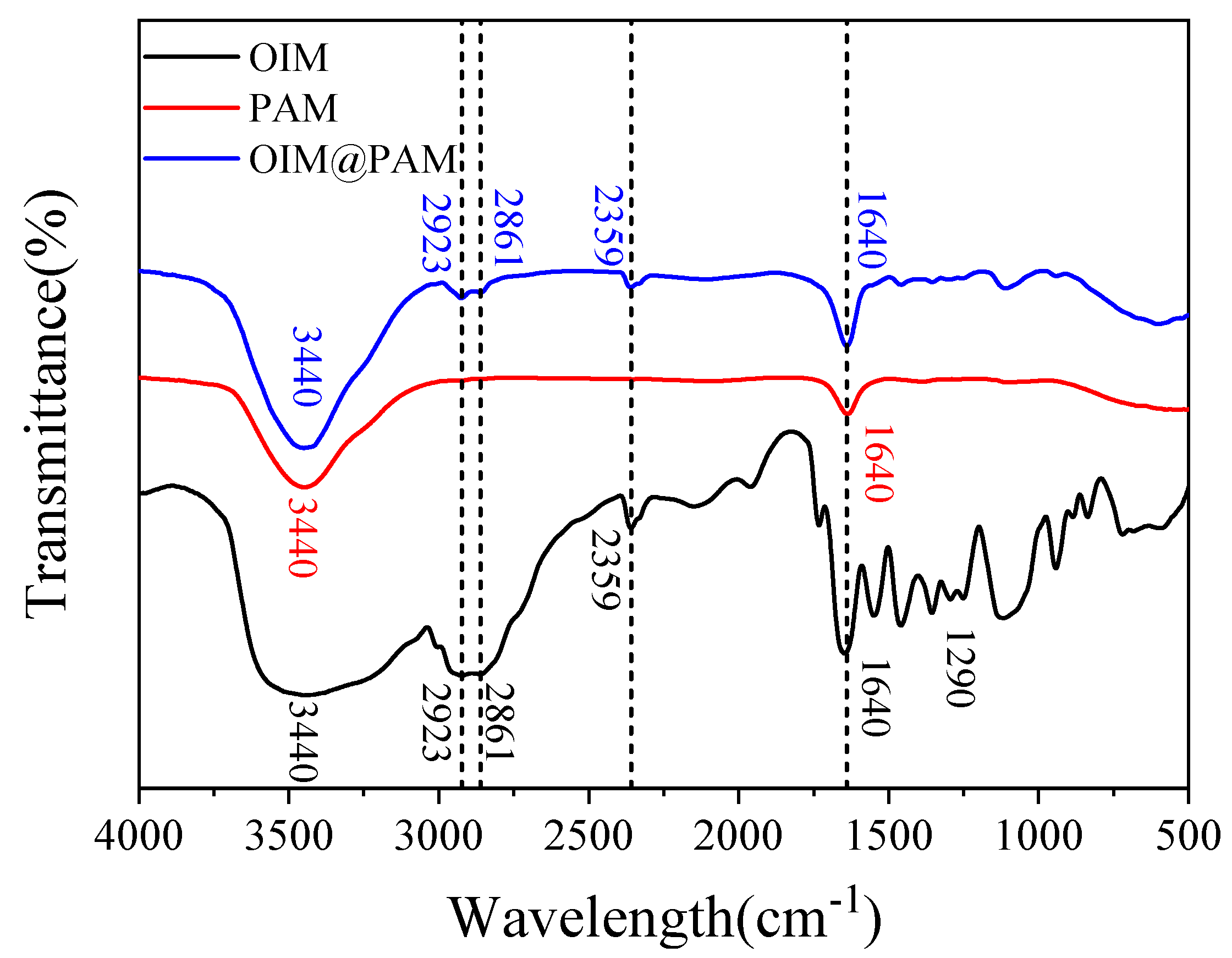

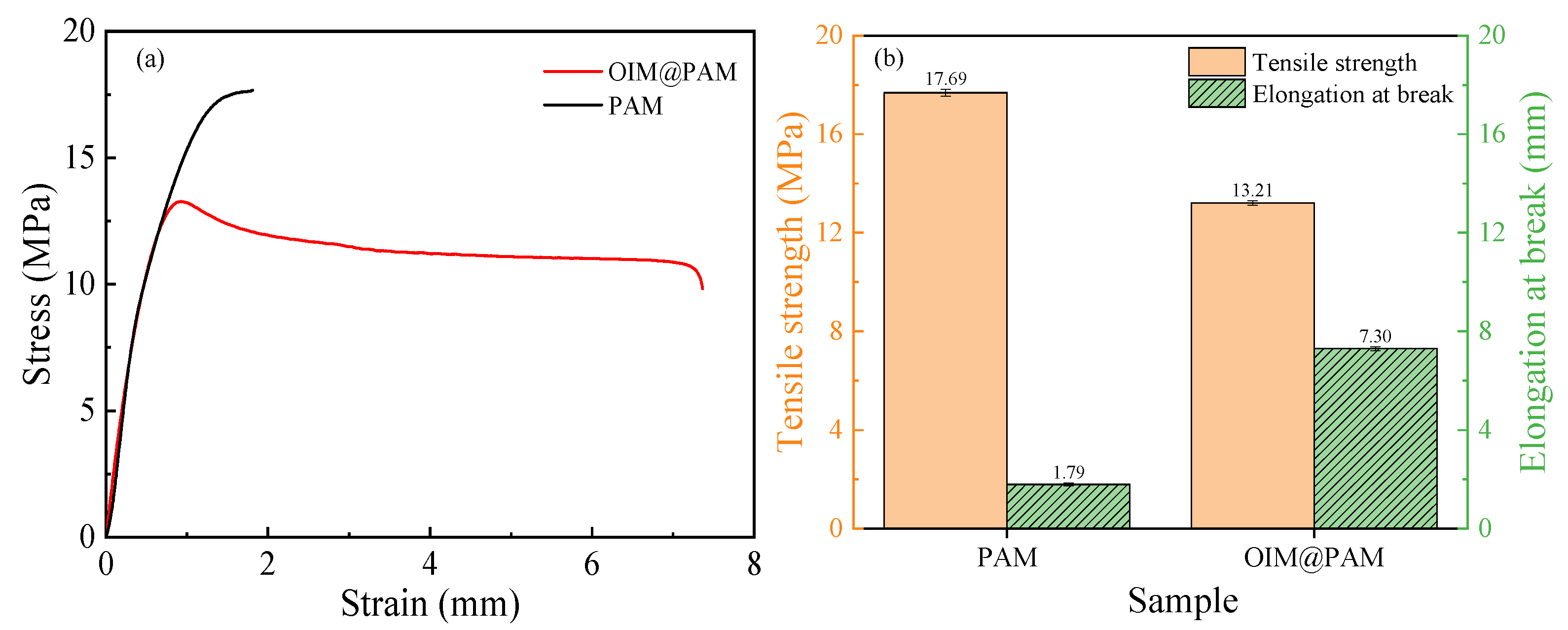
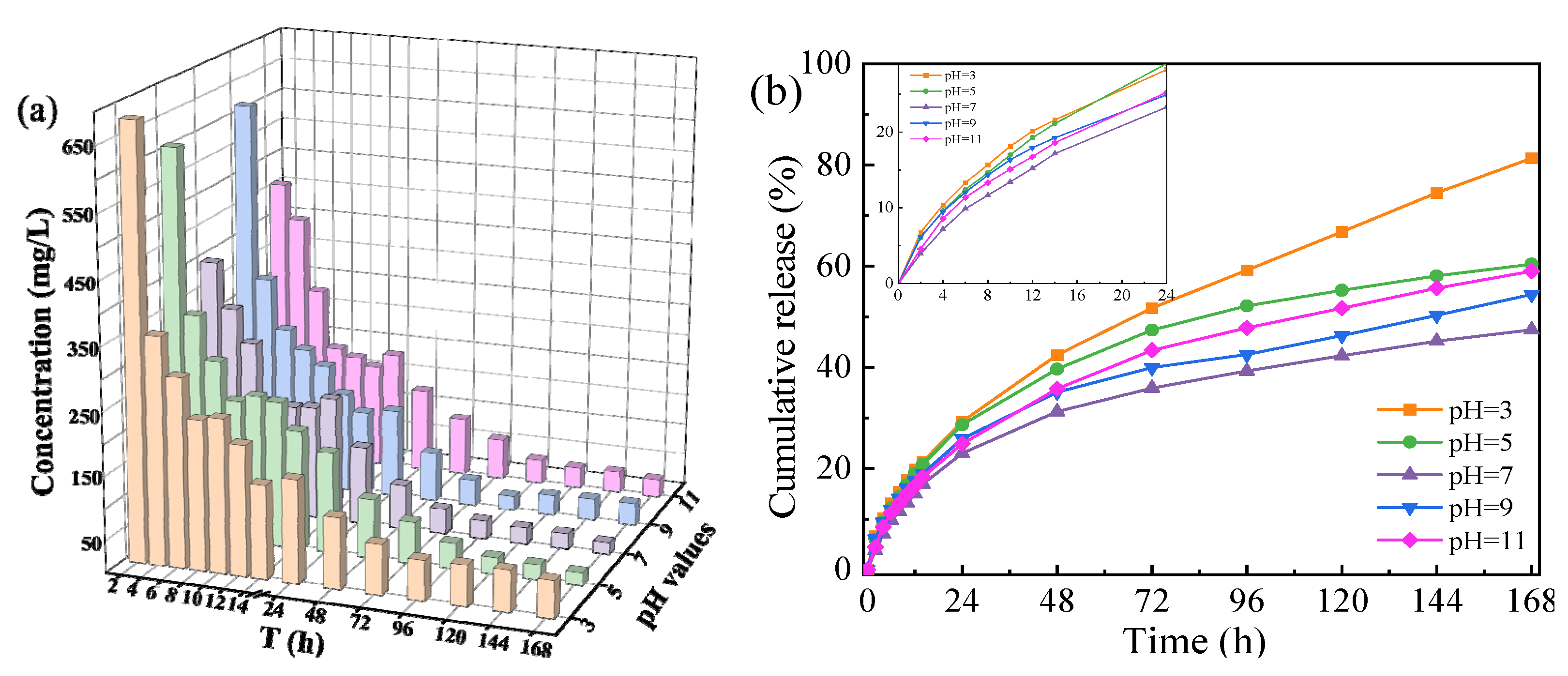

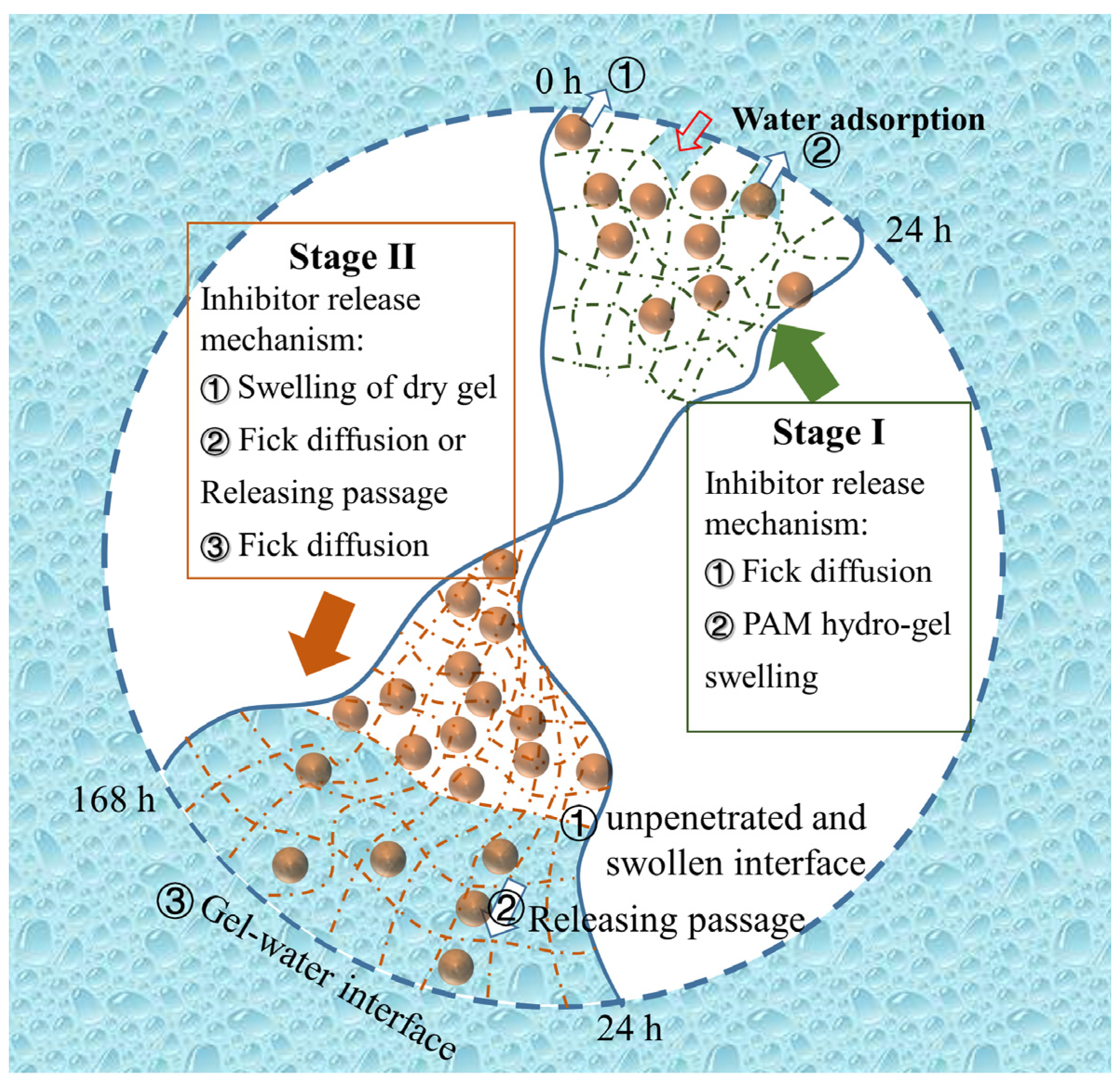
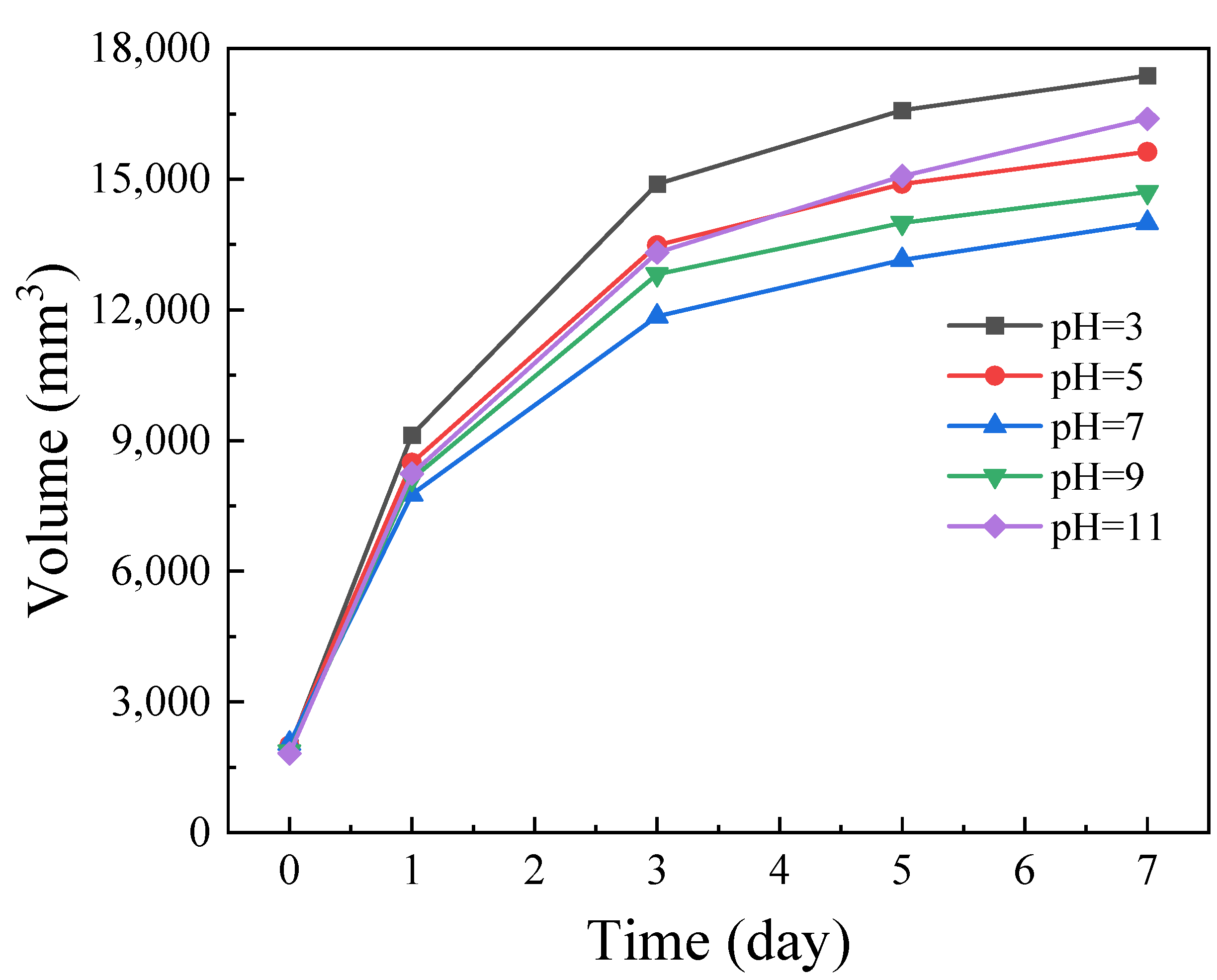
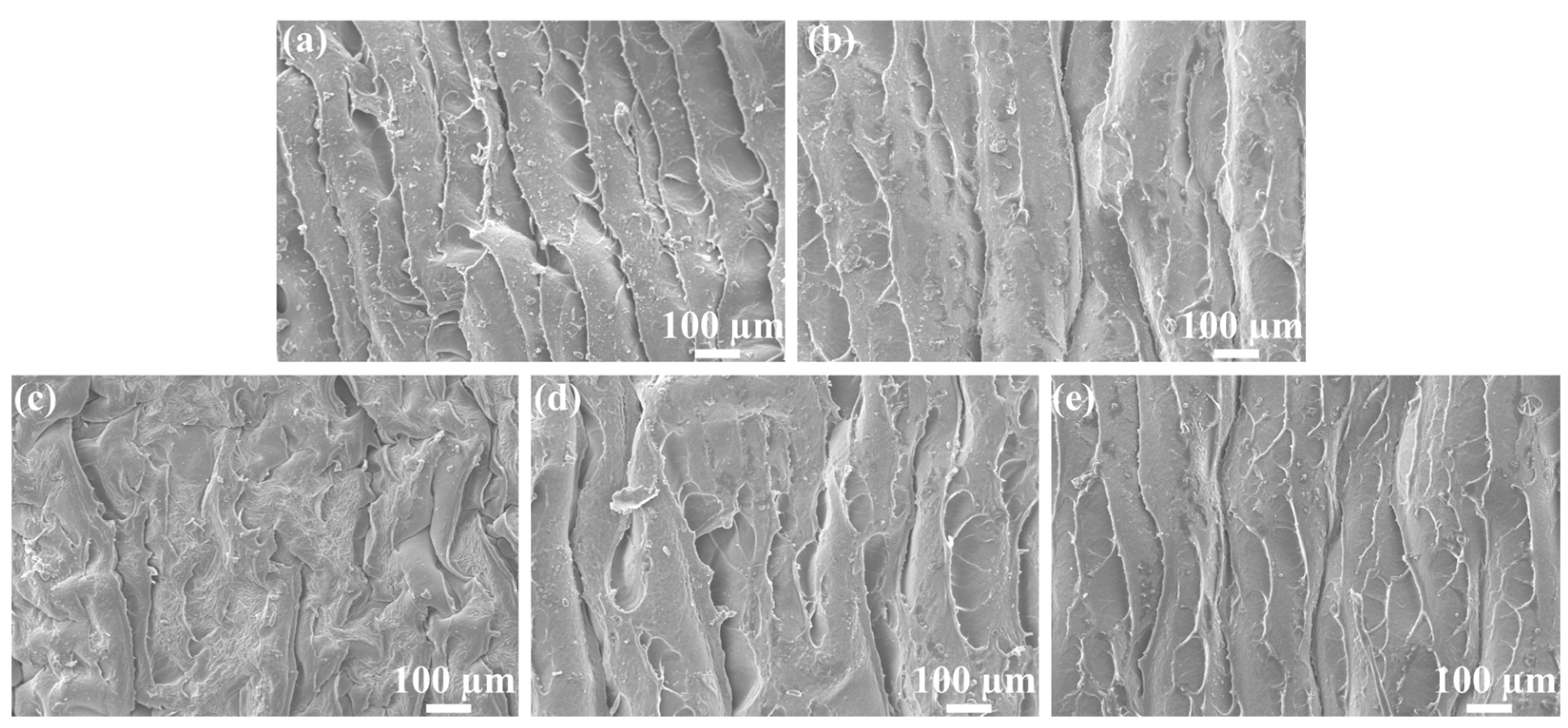

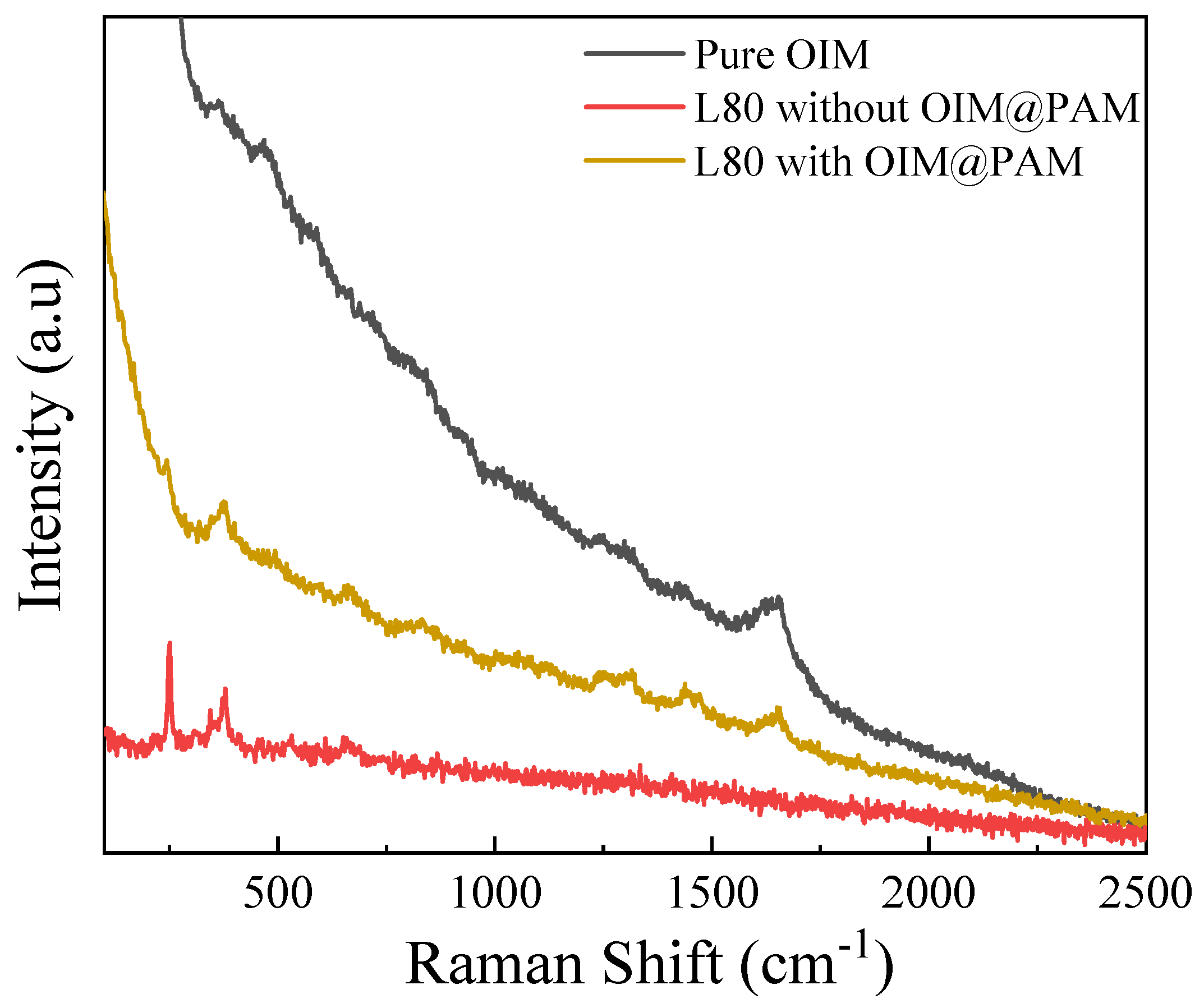
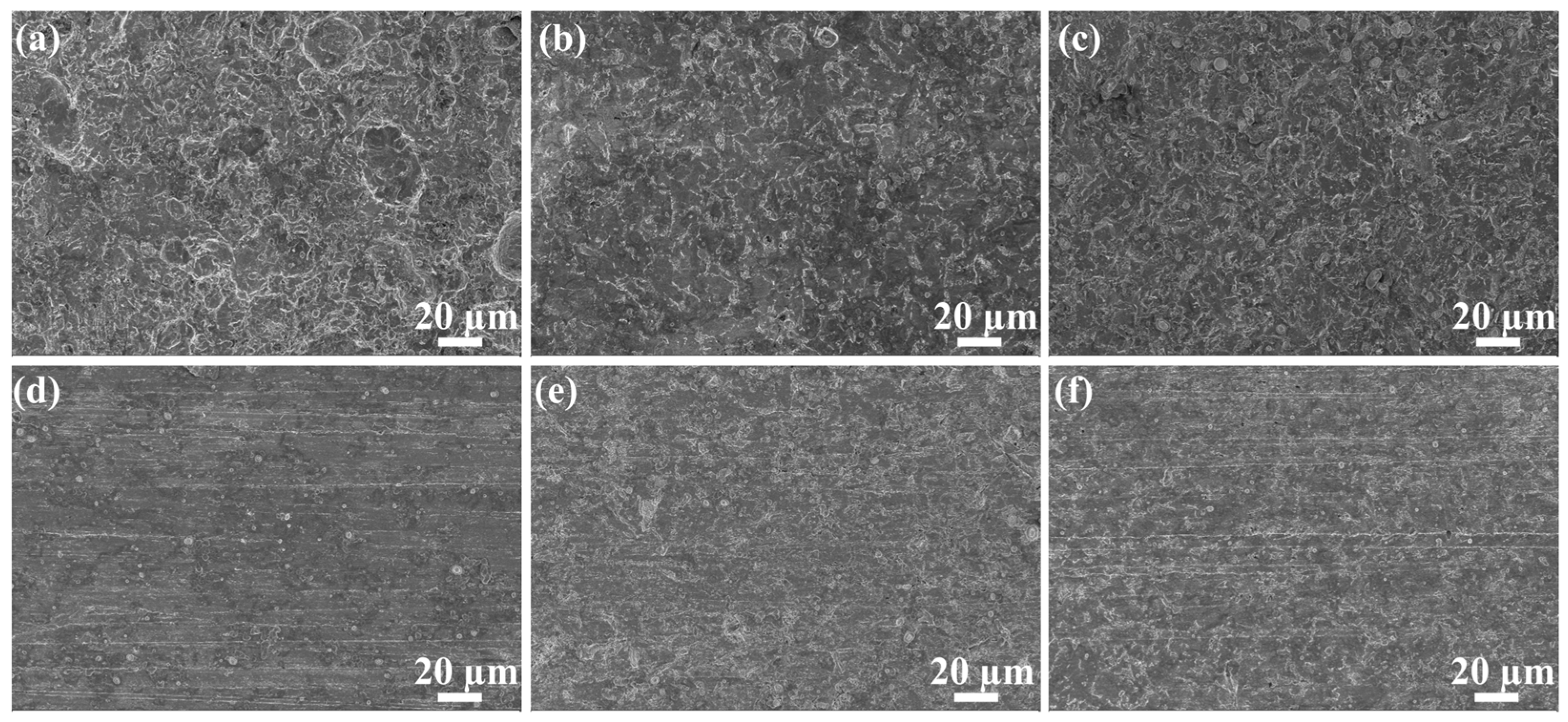
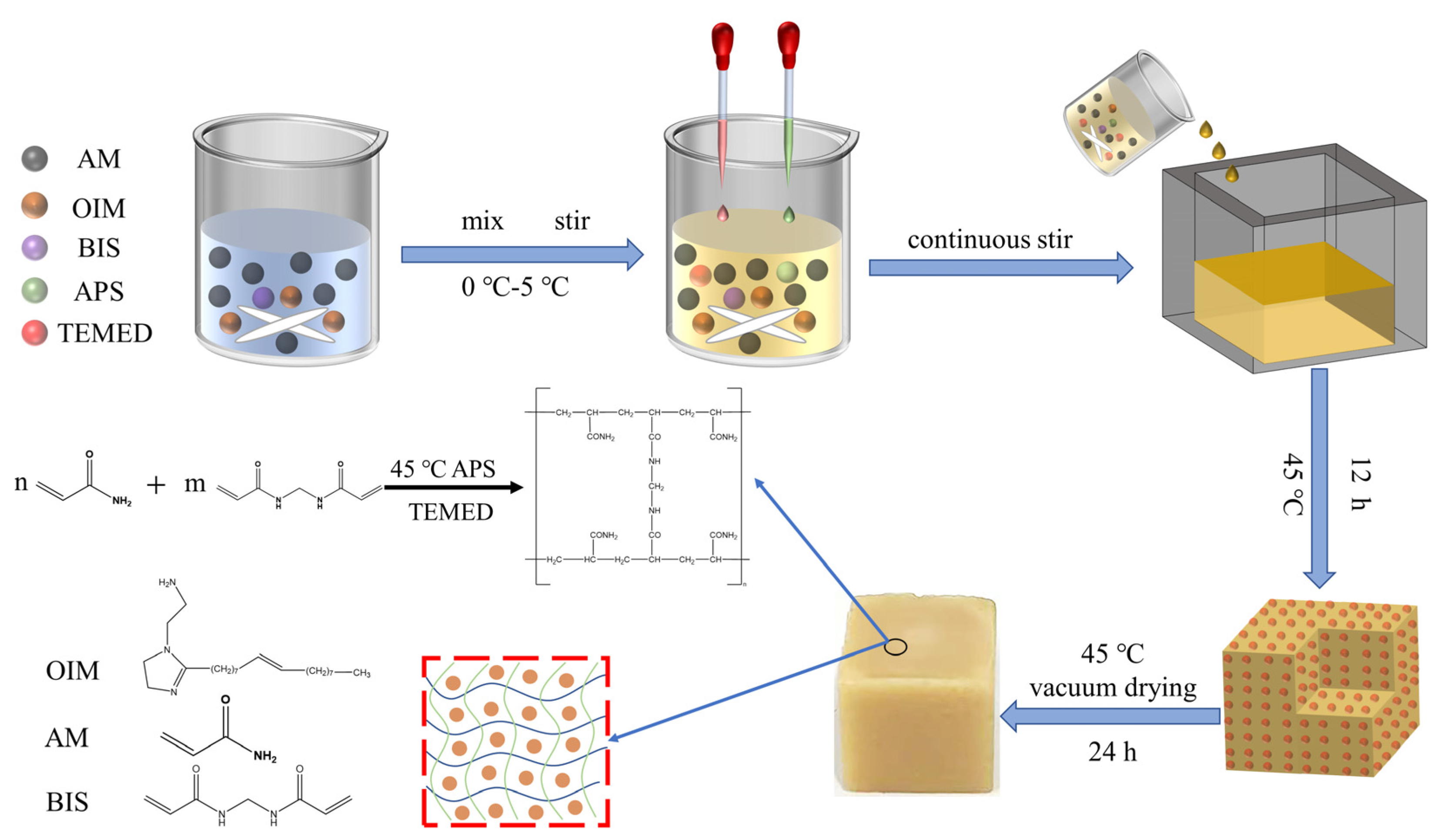

| pH Value | Stage 1 (0~24 h) | Stage 2 (24~168 h) | ||||||
|---|---|---|---|---|---|---|---|---|
| Korsmeyer–Peppas Model | Parabolic Model | |||||||
| n | k | R2 | Release Mechanism | k | a | R2 | Release Mechanism | |
| 3 | 0.5340 | 0.00351 | 0.9952 | Anomalous transport | 0.07034 | 0.00044 | 0.9978 | Sustainable release |
| 5 | 0.7435 | 0.0028 | 0.9962 | Anomalous transport | 0.1304 | −0.00413 | 0.9998 | Sustainable release |
| 7 | 0.6514 | 0.0033 | 0.9949 | Anomalous transport | 0.1156 | −0.00307 | 0.9988 | Sustainable release |
| 9 | 0.5526 | 0.0612 | 0.9960 | Anomalous transport | 0.1106 | −0.00288 | 0.9918 | Sustainable release |
| 11 | 0.6114 | 0.0033 | 0.9939 | Anomalous transport | 0.1010 | −0.00185 | 0.9984 | Sustainable release |
Disclaimer/Publisher’s Note: The statements, opinions and data contained in all publications are solely those of the individual author(s) and contributor(s) and not of MDPI and/or the editor(s). MDPI and/or the editor(s) disclaim responsibility for any injury to people or property resulting from any ideas, methods, instructions or products referred to in the content. |
© 2023 by the authors. Licensee MDPI, Basel, Switzerland. This article is an open access article distributed under the terms and conditions of the Creative Commons Attribution (CC BY) license (https://creativecommons.org/licenses/by/4.0/).
Share and Cite
Yang, Q.; Lin, B.; Tang, J.; Wang, Y.; Zheng, H.; Zhang, H.; Nie, Z.; Zhang, Y. A pH-Controlled Solid Inhibitor Based on PAM Hydrogel for Steel Corrosion Protection in Wide Range pH NaCl Medium. Molecules 2023, 28, 1314. https://doi.org/10.3390/molecules28031314
Yang Q, Lin B, Tang J, Wang Y, Zheng H, Zhang H, Nie Z, Zhang Y. A pH-Controlled Solid Inhibitor Based on PAM Hydrogel for Steel Corrosion Protection in Wide Range pH NaCl Medium. Molecules. 2023; 28(3):1314. https://doi.org/10.3390/molecules28031314
Chicago/Turabian StyleYang, Qing, Bing Lin, Junlei Tang, Yingying Wang, Hongpeng Zheng, Hailong Zhang, Zhen Nie, and Yanna Zhang. 2023. "A pH-Controlled Solid Inhibitor Based on PAM Hydrogel for Steel Corrosion Protection in Wide Range pH NaCl Medium" Molecules 28, no. 3: 1314. https://doi.org/10.3390/molecules28031314





